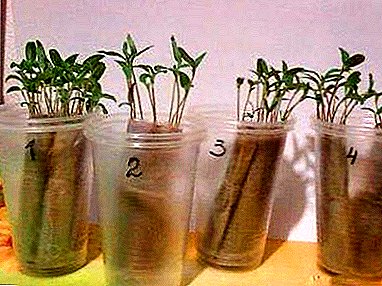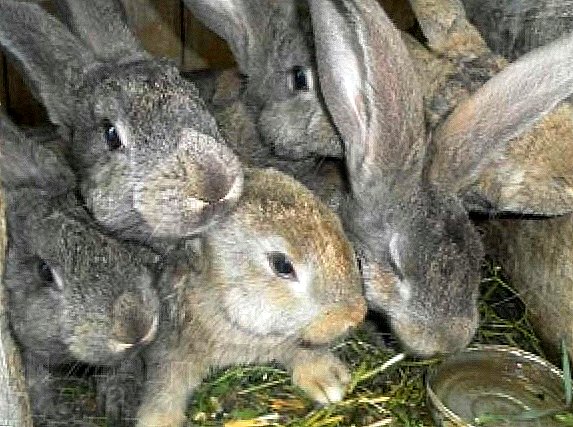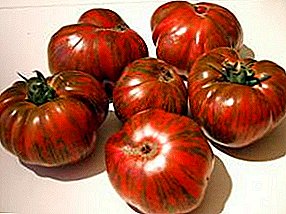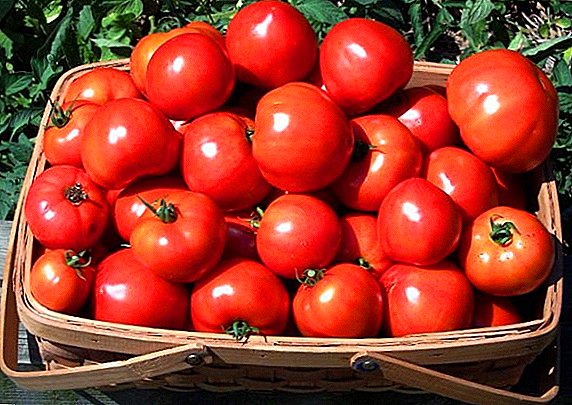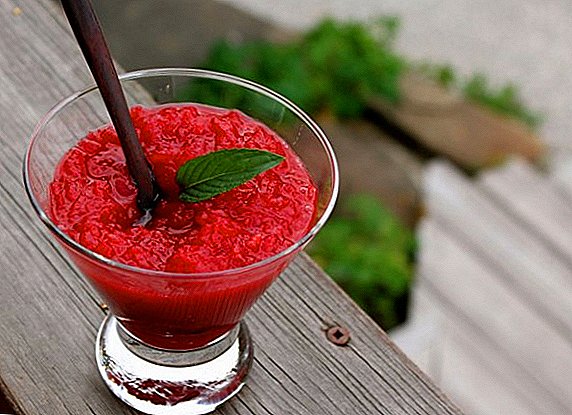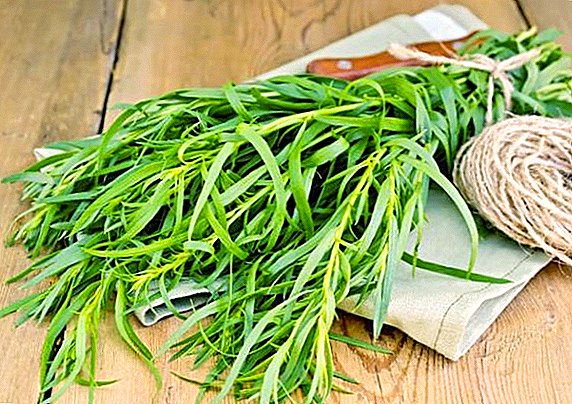
The entire list of gloxinia diseases listed below must be detected and started to fight on time.
In order to grow gloxinia, it is necessary to become more familiar with the diseases that may arise in the process of growing this plant.
The main difficulties are pests and diseases to which gloxinia is exposed. In the article we will take a closer look at the types of possible plant diseases and methods of combating them. And also what measures need to be taken for the prevention of gloxinia diseases, and in what conditions to grow a healthy flower.
Structure and features
Gloxinia leaves are quite large, up to 20 centimeters, oval, dark green, velvety. They form a rosette on a low thick stalk. In the blue, the standard position of the leaves is horizontal. Sometimes there are streaks of silver on the leaves. The underside of the leaflet is reddish or light green.
In form resemble elongated, oblong heart. Their size is small, and the surface is fleecy. The leaves of this plant are wide, but pointed at the tip. Together with the picturesque flowers an extravagant and interesting union is obtained.
Types of diseases and their photos
Brown spots
The appearance of brown spots on gloxinia is evidenced by diseases such as anthracnose or ascochitis.
Anthracnose
Fungal disease, signs of which can be seen only in the presence of brown spots on the surface of the leaves. Gradually, they begin to attack the shoots and the trunk of the whole plant, which leads to their rotting and death. The causes of the occurrence of fracture in gloxinia damage or the presence of improper care.
Attention! Such a fungus is transferred with the help of pests, equipment or sediments. To eliminate the spread of the disease on other plants, they should be treated with a fungicide 3-4 times with an interval of several weeks.
Prevention: it is necessary to carry out spraying with drugs: oxy, cuproxate, copper oxychloride. After the use of tools, they should immediately be disinfected in order to prevent further contamination.

Ascohitosis
A fungal disease, signs of which can only be seen if there are red or brown spots with brown edging on the leaves. The main cause of this disease is high humidity in the room.
To save gloxinia from ascohyte, you need:
- Instantly remove affected leaves.
- Then it is necessary to spray the Syningium with Bordeaux mixture, copper sulfate or such fungicides: Vectra, Abigapik.
- A week later, repeat the procedure.

Wither
The leaves of gloxinia wither when a plant disease such as fusarium is found. Due to lack of water and high humidity of the plant such a disease can develop.
Important! Fusarium - a fungal disease that enters the flower through an infected substrate. The leaves gradually begin to wilt, curl and acquire a pale brown shade.
- To combat this disease, gloxinia should be removed from the pot and freed from the soil.
- Then treat with fungicides: Topaz and Foodnazole.
- And at the very end the plant should be planted in a new soil.

Why curl?
Consider why leaves are curling around gloxinia. This is due to improper irrigation system. If the plant receives too much water, then its leaves begin to curl in the form of a so-called spoon. The way to combat this disease can be the establishment of watering. Before the next watering, the top layer of soil must be dried out. Another one The reason why leaves roll up is insufficient air humidity or too high a temperature. Then it is necessary to put a vessel with wet expanded clay near the pot and reduce the air temperature.

Turn yellow
Chlorosis
Disease arising from the low acidity of the soil, which is a result of watering the plant with too hard water (what kind of soil is needed for gloxinia?). Determination of the disease by external signs can be on the yellow spots on the leaves of gloxinia.

Rusty mushroom
In the case of the formation of bubbles of various colors inside the gloxinia leaflet, it is possible to speak with precision about this plant disease. The reason for its appearance may not be enough good care, content in a wet and too cold room (about the features of growing gloxinia and caring for it, read here). In order to combat this disease, it is necessary to remove all the damaged parts of the flower and to provide quality care for the “Tropican”. For prevention should be spraying colloidal sulfur.

Blacken
The cause of this disease may be the appearance of gray mold. The causative agent of the black parasite can be the increased humidity of the earth in the pot.
For the treatment of plants need:
- Remove the bush and carefully examine it.
- If there are damaged parts of the tuber and aboveground elements, then remove them.
- Treat the remaining healthy parts with Topaz or Fundazole.
- Then, the recovered plant should be transplanted into a new qualitative soil (for information on how to transplant gloxinia and its cultivation, read here).

Brown dots
Terrible brown dry spots may occur due to gray rot. To cure such a disease can be as follows: cut off the infected areas of gloxinia and treat the whole plant with a fungicide. Another reason for the appearance of such stains may be sunburn, which occurs on the leaves of the plant when it is under the bright rays of the sun. Brown specks are also formed on the leaves if excess water falls on them.
It is necessary to water a flower very carefully, along the edge of the pot. Such characteristic spots also indicate plant diseases such as thrips, which leave brown spots in the form of a fine mesh. To cure the plant from thrips, you can: irrigate and spray with Actellic, after 10 days, repeat the procedure, the treatment should be carried out 2-3 times.

Dry up
If gloxinia leaves have started to dry, especially the lower ones, then factors such as insufficient air humidity or flooding with water can serve as causes. To eliminate this disease, it is necessary to carry out the treatment with Fungicide or Fitosporin.

What to do for prevention?
For, in order to prevent various leaf lesions in gloxinia, it is always necessary to carry out prophylaxis.
- First, irrigation should be carried out on time, when it is necessary for the plant itself. In this case, there will be no drying out and bays of the soil.
- Secondly, do not place the plant where bright rays of the sun fall on it.
- Third, before planting Gloxinia tubers in the ground, they should be pre-processed.
- And, fourthly, it is necessary to monitor the humidity in the room where the flower is located.
Necessary conditions for healthy growth
For good growth, syngingy must comply with the following conditions:
- Pots with gloxinia should not be too close to each other.
It is necessary to ensure that the flowers do not touch each other leaves. If there is not enough space, the flower can stretch out.
- Light and benign soil, timely fertilization in the soil.
It is best to choose the soil on a peat base. Top dressing needs to be made several times a month, but preferably not more than three (about how to properly water and feed gloxinia, read our material). Potassium monophosphate or Fertica Lux should be used.
- The temperature should be in the range of 18-25 degrees.
If the temperature is too low, the development of gloxinia will stop, and when it is high, on the contrary, the flowers open poorly, the plant loses its turgor of leaves (you can find out why blacken, dry, rot and buds do not open).
- Good lighting that should be diffused and bright.
It is necessary to put the plant on the window sill, so that it goes to the east or west. The light day should last 12-14 hours.
- Timely soil moistening.
Between irrigation, the top layer of soil should have time to dry out a bit. Watering should be done through the pan or on the edge of the pot. You can use only water at room temperature. After moistening, excess water should go through the holes in the pot (you can find out which pot is needed for gloxinia here).
- Features wintering gloxinia: when the plant to retire?
- Why does gloxinia not bloom and how to make it release buds?
- What to do with faded gloxinia?
Conclusion
The list of the above diseases, which are found in gloxinia, is not exhaustive. In this case, in order to prevent the death of the plant, it is necessary to detect the disease in time and begin an active fight against it. If all preventive measures and the fight against the disease are not carried out in time, then it is possible to lose not only this plant, but also the neighboring ones. The best option in this case is to provide conditions suitable for the development of gloxinia, and in a timely manner to prevent possible diseases.


